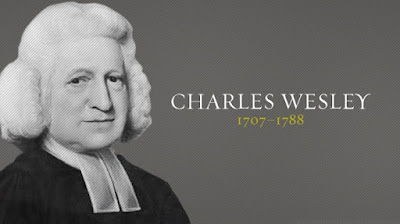Vocal Music
- Lead Me, Lord – S. S. Wesley (1810-1876)
Instrumental Music
- Partita on Was Gott tut, das ist wohlgetan (What God Ordains Is Always Good) – Johann Pachelbel (1653-1706)
- Nocturne in A Minor – David Karp
- Toccata in C – Johann Pachelbel
Congregational Music (all hymns from the Hymnal 1982 with the exception of the last hymn which is from Lift Every Voice and Sing II.)
- Hymn 594 Go of grace, and God of glory (CWM RHONDDA)
- Hymn 533 How wondrous and great thy works (LYONS)
- Hymn When peace like a river (VILLE DU HAVRE)
- Psalm 130– tone VIIIa
As I am away this week at the Diocese of Texas Music Camp for Youth, I am unable to go into a detailed account of the music. So here are some quick notes
The anthem is an excerpt from a much longer anthem, Praise the Lord, O my soul, by Samuel Sebastian Wesley, an English organist and composer. The grandson of Charles Wesley, he was born in London, and sang in the choir of the Chapel Royal as a boy. He learned composition and organ from his father, Samuel, completed a doctorate in music at Oxford, and composed for piano, organ, and choir. He was organist at Hereford Cathedral, Exeter Cathedral, Leeds Parish Church, Winchester Cathedral, and Gloucester Cathedral. Wesley strove to improve the standards of church music and the status of church musicians;
The original anthem was written in 1861, with this excerpt first published in 1905 in The Anthem Book, no. 8. But it was not until it was published in The Church Anthem Book in 1933 that it became quite popular. Now you can find this simple song in almost 30 hymnals, including the Episcopal book Lift Every Voice and Sing II, and the Renew hymnal which is in our pews.
Music by Johann Pachelbel opens and closes our service. First is a partita (an instrumental piece composed of a series of variations, as a suite) on the Lutheran Chorale What God Ordains Is Always Good (Was Gott tut, das ist wohlgetan). There are nine variations of varying difficulty and styles, even including a gigue, which is perhaps a little out of character for church music, but is fun to play, nevertheless.
During communion you will hear a Nocturne in A Minor by David Karp. As you mighty imagine, a nocturne is a slow, dreamy, sleepy kind of piece. This one is no exception. David Karp was on the piano faculty while I was at SMU, and, in fact, still is. He wrote this piece in memory of another professor at SMU, Louise Bianchi, who was Professor Emerita of Piano Pedagogy.
Dr. Karp is a nationally known pianist, composer, educator, lecturer and author, who holds degrees from the Manhattan School of Music and the University of Colorado with additional doctoral studies at Teachers College, Columbia University. At Southern Methodist, he teaches classes in performance, chamber music, improvisation, advanced class piano for piano majors, required piano classes for music majors and sight-reading classes for piano majors. In addition to his academic work, he is prolific composer, with compositions numbering over several hundred and published by several major music publishers in America. These compositions are performed in competitions, recitals and a variety of music venues all over the world, often listed as required repertoire for students.


